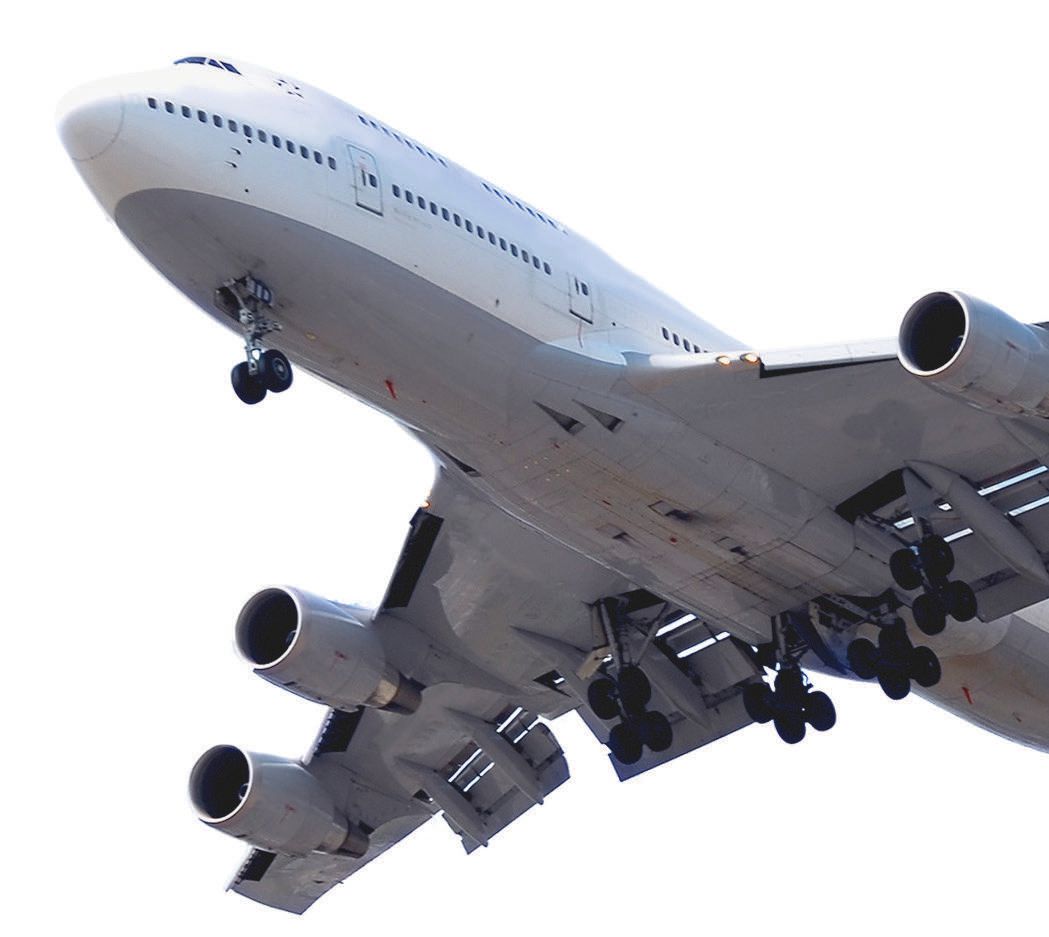How Tribology Transformed the 20th Century
Dr. Robert M. Gresham, Contributing Editor | TLT Lubrication Fundamentals June 2016
A recent report describes our science’s impact on the greatest technical advances of the past 100 years.

© Can Stock Photo Inc. / Elenathewise
AT A RECENT STLE BOARD OF DIRECTORS MEETING, I was reminded of a report by the National Academy of Engineering (NAE) that revealed the top 20 engineering “impacts” of the 20th Century. I have had this report stored on my computer desktop for quite a while and kind of forgot it was there.
While not all of the impacts directly result from the efforts of our members and colleagues, I was still struck by the breadth of our influence on these advances. Also, this year is the 50th anniversary of the T-word:
tribology. Thus, I thought it might be of value to review these engineering impacts; you might know of some contributions from our field of which I’m unaware.
In all of these following advancements, another consideration is the equipment or hardware involved in the advancement that had to be manufactured. And, of course, the manufacturing equipment itself has a vast array of lubrication and tribological issues to be managed.
NAE has ranked these advancements in order of importance.
1. Electrification. “The vast networks of electricity that power the developed world,” says NAE. Regardless of how electricity is generated (coal, oil, gas, hydro, wind, solar or nuclear), all have bearings, valves, electromechanical switching, pollution control equipment, etc., that have tribological issues in a wide variety of operating environments (hot, cold, radiation, wet, dry, etc.). For example, turbine oils are much improved in recent years, lubricants and anti-seizes can operate in nuclear containment areas, and the whole problem of premature wind turbine bearing failure is still under study.
2. Automobile. “Revolutionary manufacturing practices made the automobile the world’s major mode of transportation by making cars more reliable and affordable to the masses,” notes NAE. While the academy highlighted the manufacturing practices, there are many design and lubricant developments, including seal development, that have increased safety, reliability and oil change intervals and significantly improved fuel economy.
3. Airplane. “Flying made the world accessible, spurring globalization on a grand scale,” states NAE. Like the automobile, new manufacturing techniques and materials development have played a prominent role in improving reliability and safety. Liquid and solid lubricants have been developed for use in both airframe and jet engine applications in a wide variety of operating environments. Further, advanced bearing and sealing designs also have resulted in improved reliability, safety, range, fuel economy and cost.
4. Safe and abundant water. “Preventing the spread of disease, increasing life expectancy,” notes NAE. The contributions here are largely indirect having to do with pumping, valving and sealing advancements.
5. Electronics. Says NAE: “Vacuum tubes and later transistors underlie nearly all modern life.” Again, contributions from tribologists are largely indirect, having to do with robotics and other manufacturing techniques.
6. Radio and television. “Dramatically changed the way the world received information and entertainment,” says NAE. While contributions are largely indirect and relate to manufacturing techniques for equipment, there also are developments in bearing designs that have made cameras work smoother (no jerking, better focusing, etc.).
7. Agricultural mechanization. Says NAE: “Leading to a vastly larger, safer, less costly food supply.” Many of the advances that lead to better aerospace and automotive design have translated directly to improved agricultural mechanization, which in turn have extended to off-road vehicles of all types.
8. Computers. “The heart of the numerous operations and systems that impact our lives,” writes NAE. Tribologists have made significant contributions toward hard drive development, enabling progressively closer and closer near contact between read-head and disk; this in turn allows for more and more data storage at progressively lower costs. A key opportunity is in hard drives for a true nanoscale, transformative science.
9. Telephone. Notes NAE: “Changing the way the world communicates personally and in business.” Contributions are largely indirect having to do with manufacturing techniques for equipment. Although, the early telephones had a mechanical dial and electrical contacts that created certain tribological challenges.
10. Air conditioning and refrigeration. “Beyond convenience, it extends the shelf life of food and medicines, protects electronics and plays an important role in health care delivery,” notes NAE. Cryogenic bearings and low-temperature lubricants have enabled these devices, plus indirect contributions having to do with manufacturing techniques for the equipment.
11. Interstate highways. Notes NAE: “44,000 miles of U.S. highway allowing goods distribution and personal access.” Tribology’s contributions are largely indirect and have to do with off-road construction equipment as well as snowplows, etc.
12. Space exploration. “Going to outer space vastly expanded humanity’s horizons and introduced 60,000 new products on Earth,” notes NAE. This effort has led to a major expansion of our knowledge of tribology of a wide variety of materials in operating in extreme environments.
13. Internet. “A global communications and information system of unparalleled access,” says NAE. Contributions are largely indirect, having to do with manufacturing techniques for digital equipment.
14. Imaging technologies. “Revolutionized medical diagnostics,” says NAE. While contributions are largely indirect, relating to manufacturing techniques for the equipment, there also are developments that make imaging devices work smoother (no jerking, better focusing, etc.).
15. Household appliances. “Eliminated strenuous, laborious tasks, especially for women,” notes NAE. Everything from washers, dryers, kitchen appliances, vacuum cleaners and lawn mowers are all made possible by the efforts of tribologists, including improved energy efficiency, less noise, longer life and lower cost.
16. Health technologies. NAE states: “Mass production of antibiotics and artificial implants led to vast health improvements.” As many of you know, I’m walking proof of the tribological improvements in artificial implants, which have improved their life and reliability and have enabled me to maintain a very active, pain-free lifestyle.
17. Petroleum and gas technologies. “The fuels that energized the 20th Century,” says NAE. All equipment from well drilling to gas pumps involve the efforts of tribologists to improve bearing life, seal life and reduce leakage and to develop best-maintenance practices to keep all associated equipment running smoothly.
18. Laser and fiber optics. “Applications are wide and varied, including almost simultaneous worldwide communications, non-invasive surgery and point-of-sale scanners,” notes NAE. Again, contributions from tribologists are indirect and relate to manufacturing techniques.
19. Nuclear technologies. “From splitting the atom, we gained a new source of electric power,” states NAE. Specialty lubricants and anti-seizes were developed for use in containment areas.
20. High-performance materials. “Higher quality, lighter, stronger and more adaptable,” says NAE. When some of these new materials are used in applications where there can be relative motion and contact, new tribochemical interactions can take place requiring specialty lubricants.
So while I have necessarily droned on a bit, you can readily see that the world of tribology directly or indirectly affects most of these advances, often in significant ways. Alas, when you are at a social gathering and someone asks what you do for living and you say lubrication engineer or tribologist, you always get that deer in the headlights expression of complete incomprehension.
Yet everyone owes much of their improved life versus their ancestors to the efforts of STLE members. But how can you tell them in a quick simple way? I guess we all should continue tooting the tribological trumpet.
 Bob Gresham is STLE’s director of professional development. You can reach him at rgresham@stle.org
Bob Gresham is STLE’s director of professional development. You can reach him at rgresham@stle.org.